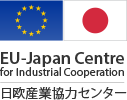

With Tokyo located in it, the Kanto region is considered to be the main engine of Japan's economy. The region accounts for approximately 45% of Japan’s GDP and has the 7th largest economy in the world.
The region is a home to multiple Science hubs and R&D centers which explains the accumulation of many Japanese large corporations and human resources. The area is known for producing many of the world’s top level scientific technologies and inventing advanced manufacturing technologies. In Tokyo alone, there are more than 680,000 business establishments of which 99% are small and medium-size businesses. About 8.2 million people work in Tokyo with about 70% of them as employees of small and medium businesses. In addition, about 75% of the foreign companies in Japan are headquartered in Tokyo.
Since the national capital is situated within the Kanto region, the area has become one of the favorite places for foreign nationals to live in. Ranging from the electronic and technological atmosphere in Akihabara, passing through the traditional Asakusa toward the fashion district in Shibuya, each place provides a different approach to Japanese lifestyle and culture.
Long-established industries: agriculture, fisheries, manufacturing industries, IT, electronic industry, heavy industry (chemical industry, iron and steel, machinery) light industry (food and beverages, plastics, ceramics). Growing industries: new energy-related industries, energy saving-related industries, environment/recycling-related industries.
Long-established industries: automobiles, aircraft, medical components and pharmaceuticals, and other machines used in industry, high-tech industries, agriculture, traditional industries.
Long-established industries: transportation machinery, machinery, foodstuffs, electric equipment, agriculture.
Long-established industries: transport equipment, chemicals, food products, information and communication equipment, metal products.
Long-established industries: petroleum industry, chemicals industry, steel industry, processing and assembly industries, food products, agriculture, fisheries, tourism-related industries.
Long-established industries: information and communication industries, wholesale and retail trade, finance and insurance industry, eating and drinking services, construction, manufacturing industries, R&D.
Long-established industries: transport equipment, general equipment, chemicals, food products, petroleum products, biotechnology, ICT.
Further Readings:
Sources;
Picture: Lake Chuzenji and Kegon Waterfall, Nikko,Tochigi Prefecture
Picture copyright: Wikipedia under the GNU Free Documentation License
The EU-Japan Centre currently produces 5 newsletters :









